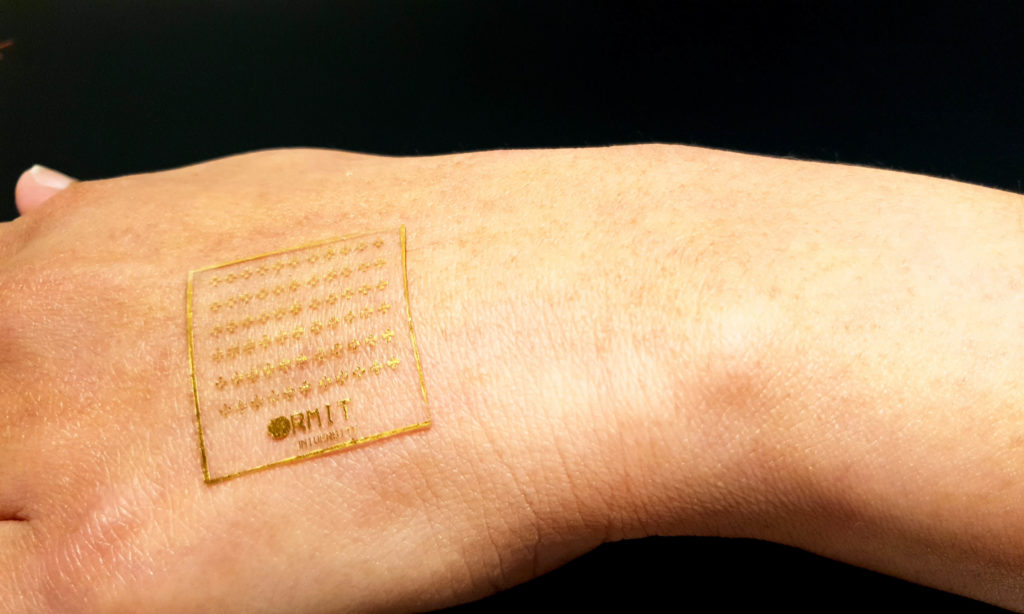Researchers from the Royal Melbourne Institute of Technology (RMIT) University in Australia have developed artificial skin that is capable of reacting to pain just like real skin does. This innovation could lead to more effective prosthetics, more intelligent robotics and non-intrusive ways of doing skin grafts.
The artificial skin prototype is able to replicate the way human skin detects pain through electronics. The device parrots the body’s near-instant feedback response to painful stimulation and can react just as quickly as nerve signals are able to travel to the brain, according to RMIT University News.
“Skin is our body’s largest sensory organ, with complex features designed to send rapid-fire warning signals when anything hurts,” said Professor Madhu Bhaskaran, the lead researcher.
She believes the prototype, and research, which was published in the journal Advanced Intelligent Systems, is a significant advance towards next-generation biomedical technologies and intelligent robotics.
“We’re sensing things all the time through the skin but our pain response only kicks in at a certain point, like when we touch something too hot or too sharp,” said Bhaskaran.
“No electronic technologies have been able to realistically mimic that very human feeling of pain until now.”
RMIT’s artificial skin reacts instantly when it feels pressure, heat or cold reach a painful threshold.
The skin is the culmination of years of work by the research team – it combines three technologies previously developed and patented by the team.
These include:
– Stretchable electronics: a transparent, unbreakable and wearable layer, which is made by combining oxide materials with biocompatible silicone. It is as thin as a sticker.
– Temperature-reactive coatings: self-modifying coatings that are based on a material that adapts in response to heat. It is 1000 times thinner than human hair.
– Brain-mimicking memory: electronic memory cells that mimic the way the brain uses long-term memory to recall and retain information.
The artificial skin is made up of all three technologies, which are layered over each other. The pressure sensor uses stretchable electronics and long-term memory cells; the heat sensor combines temperature-reactive coatings and memory, while the pain sensor makes use of all three technologies.
The memory cells in the artificial skin are responsible for triggering a response when the pressure, heat or pain passes a certain threshold, according to Md Atuar Rahman, a PhD researcher.
“We’ve essentially created the first electronic somatosensors – replicating the key features of the body’s complex system of neurons, neural pathways and receptors that drive our perception of sensory stimuli,” said Rahman.
He added that existing technologies have previously used electric signals to mimic different levels of pain, unlike, these new technologies that are able to react to real mechanical pressure, temperature and pain, in order to issue the appropriate electronic response.
“It means our artificial skin knows the difference between gently touching a pin with your finger or accidentally stabbing yourself with it,” Rahman adds, explaining that this is a critical distinction that has never been achieved before electronically.
Picture: RMIT University

